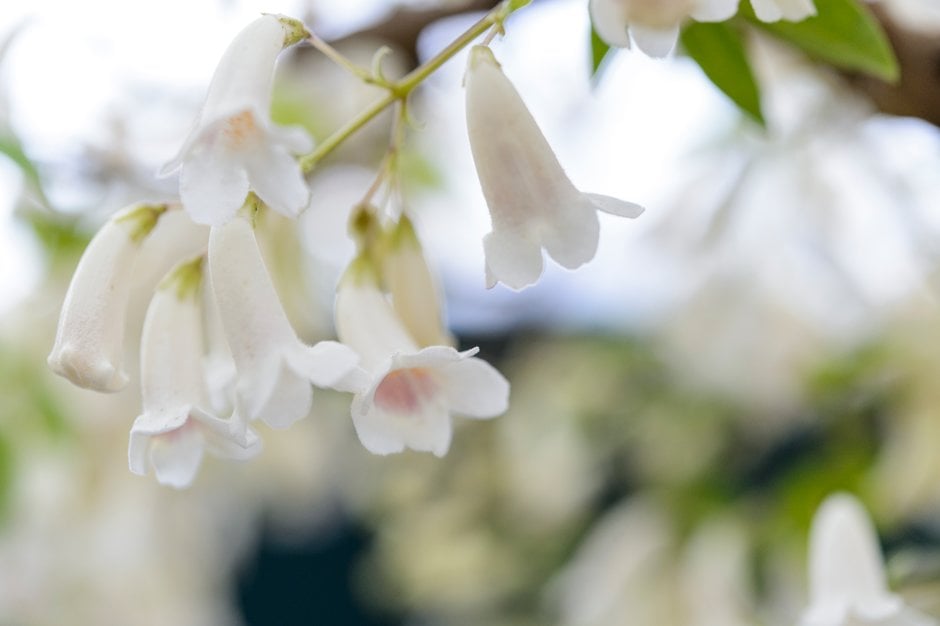Pandorea pandorana
wonga-wonga vine
A vigorous, twining, evergreen climber with compound leaves made up of six pairs of mid-green leaflets. The fragrant, tubular, creamflowers have variable reddish-purple markings, and areborne in clusters in winter and spring
Other common names
wonga-wonga vineSize
Ultimate height
4–8 metresTime to ultimate height
5–10 yearsUltimate spread
1–1.5 metresGrowing conditions
Moisture
Moist but well–drainedpH
Acid, Alkaline, NeutralColour & scent
| Stem | Flower | Foliage | Fruit | |
| Spring | Cream | Green | ||
|---|---|---|---|---|
| Summer | Green | |||
| Autumn | Green | |||
| Winter | Cream | Green |
Position
- Full sun
Aspect
South–facing or West–facing
Exposure
Sheltered Hardiness
H1CBotanical details
- Family
- Bignoniaceae
- Native to GB / Ireland
- No
- Foliage
- Evergreen
- Habit
- Climbing
- Genus
Pandorea are woody climbers with twining stems bearing pinnate leaves and terminal panicles or racemes of fragrant, funnel-shaped flowers with 5 spreading lobes
- Name status
Correct
- Plant range
- Australia
How to grow
Cultivation
May survive outdoors against a warm wall in very mild areas, otherwise grow in a cool greenhouse or conservatory, in peat-free, loam-based compost, in full light
Propagation
Propagate by layering or root semi-ripe cuttings with bottom heat in summer
Suggested planting locations and garden types
- Patio and container plants
- Mediterranean climate plants
- Wall side borders
Pruning
Pruning group 11, after flowering
Pests
May be susceptible to aphids and glasshouse red spider mite
Diseases
Generally disease-free
Love gardening
Sign up to receive regular gardening tips, inspiration, offers and more
View our Privacy Policy
Get involved
The Royal Horticultural Society is the UK’s leading gardening charity. We aim to enrich everyone’s life through plants, and make the UK a greener and more beautiful place.
